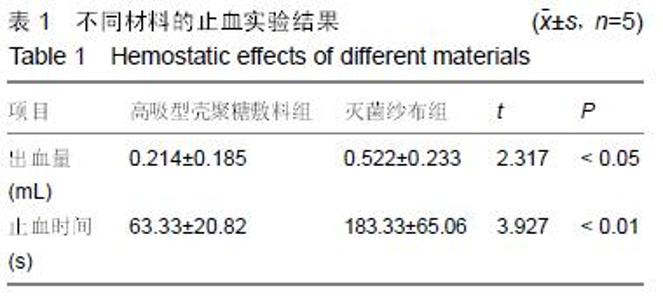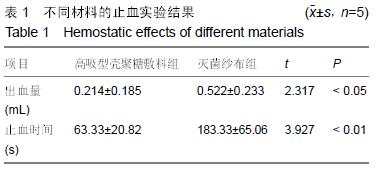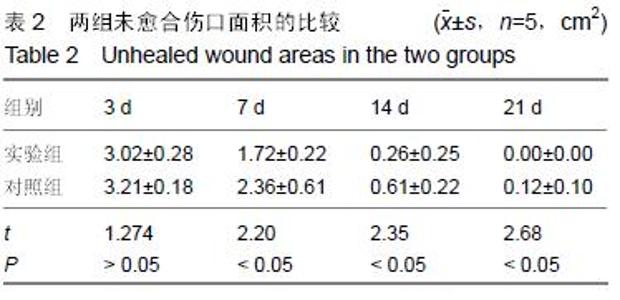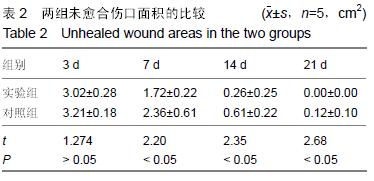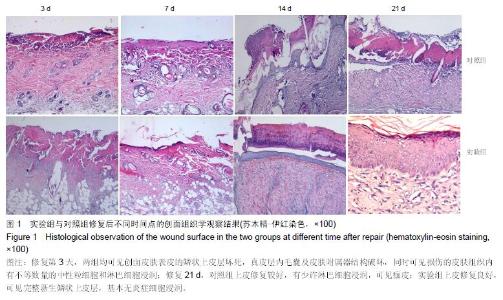| [1] Kumar MN.A review of chitin and chitosan applications. React Funct Polym.2000;46:1-27. [2] Mi FL,Tan YC,Liang HF,et al.In vivo biocompatibility and degradability of a novel injectable-chitosan-based implant.Biomaterials.2002;23:181-191. [3] Zheng LY,Zhu JF.Study on antimicrobial activity of chitosan with different molecular weights.Carbohyd Polym.2003;54:527-530. [4] Lim SH,Hudson SM.Synthesis and antimicrobial activity of a water-soluble chitosan derivative with a fiber-reactive group.Carbohyd Res.2004;339:313-319. [5] 蒋挺大.壳聚糖[M].2版.北京:化学工业出版社, 2006: 237-238. [6] Knill CJ,Kennedy JF,Mistry J,et al.Alginate fibres modified with unhydrolysed and hydrolysed chitosans for wound dressings.Carbohyd Polym.2004;55:65-76. [7] Berger J,Reist M,Mayer JM,et al.Structure and interactions in chitosan hydrogels formed by complexation or aggregation for biomedical applications. Eur J Pharm Biopharm. 2004;57:35-52. [8] 高萍.壳聚糖-左氧氟沙星长效缓释敷料的烧伤疗效研究[J].生物医学工程杂志2014,31(4):807-809 [9] 谷庆阳,高亚兵.壳聚糖无纺布敷料对切割伤伤口止血和促进愈合作用的研究[J]解放军医学杂志, 1999,12(24): 429-431. [10] 首家保,陈彬,芦慎.不同敷料修复创面的实验研究及临床应用评价[J].中国组织工程研究,2012,16(8):1479-1481. [11] Azad AK,Sermsintham N,Chandrkrachan S,et al. Chitosan membrane as a wound healing dressing: Characterization and clinical application.J Biomed Mater Res.2004;69B(2):216-222 [12] Janvikul W,UppananP,Thavornyutikarn B,et al.In vitro comparative hemostaic studied of chitin,chitosan and their derivatives.J Appl Polym Sci.2006;102(1):45-51. [13] Boucard N,VitonC,Agay D,et al.The use of physical hydrogels of chitosan for skin regeneration following thrid –degree burns.Biomaterials. 2007;28(24): 3478-3488. [14] Ishihara M,Nakanishi K,Ono K,et al.Photocrosslinkable chitosan as a dressing for wound occlusion and accelerator in healing process.Biomaterials. 2002; 23(3):833-840. [15] 李哲清.壳聚糖对青光眼滤过术后瘢痕形成影响的实验研究[D].安徽:安徽医科大学,2006. [16] 陈煜,窦桂芳,罗运军,等.甲壳素和壳聚糖在伤口敷料中的应用[J].高分子通报,2005,18(1):94-100. [17] 宋炳生,钟晓峰.甲壳质和壳聚糖治疗外伤的进展[J].中国生化药物杂志,2003,24(4):213-214. [18] Yusof NL,Wee A,Lim LY,et al.Flexible chitin films as potential wound-dressing materials: wound model studies.J Biomed Mater Res A.2003;66(2):224-232. [19] Jin Y,Ling P X,He YL,et al.Effect of chitosan and heparin on early extension of burns.Burns. 2007; 33(8):1027-1031. [20] 何静.壳聚糖豚鼠皮肤过敏试验[J].徐州医学院学报, 2001,21(5):384-386. [21] 首家保.不同敷料修复创面的实验研究及临床应用评价[J].中国组织工程研究,2012,16(80): 1479-1482. [22] 张敬德,邢新,郑健生.几丁糖对皮肤创伤愈合的影响[J].中华医学美学美容杂志,2003,9(6):373-374. |
